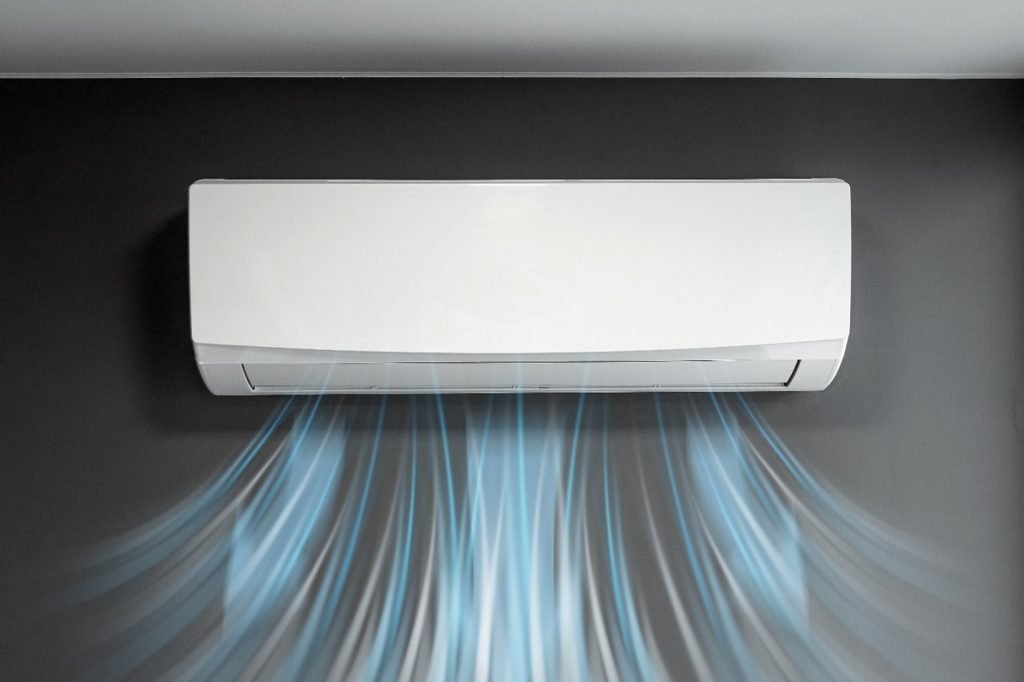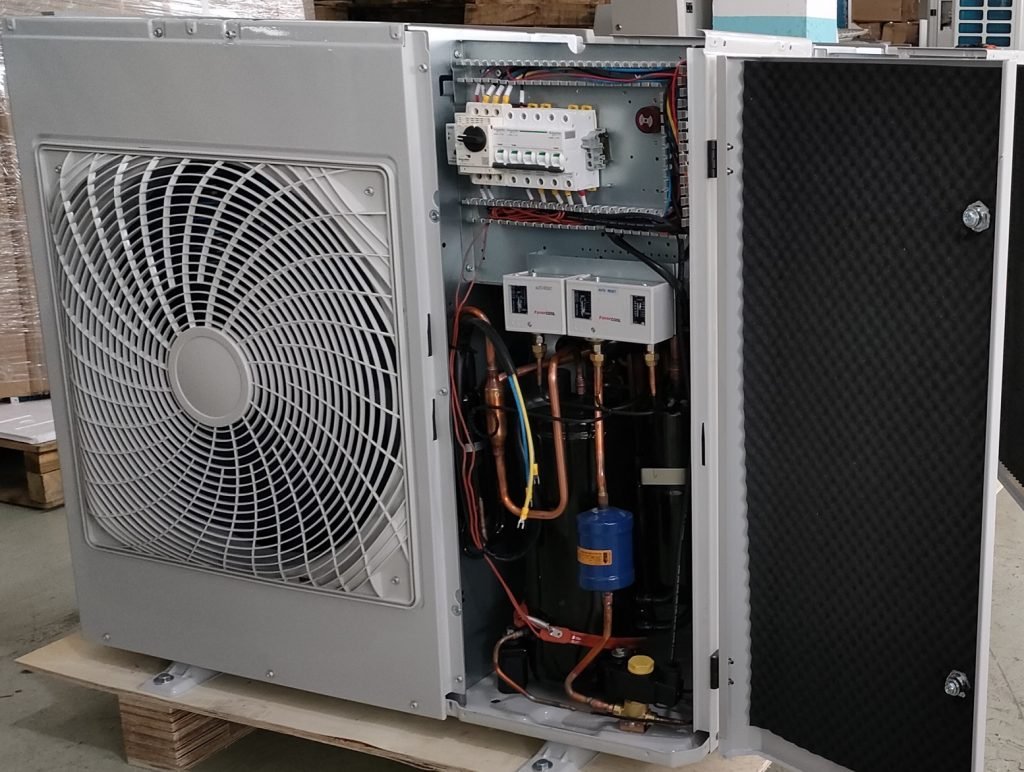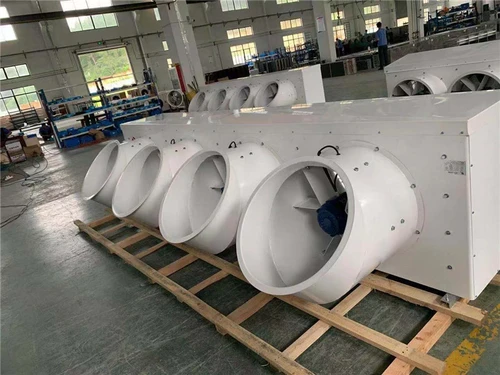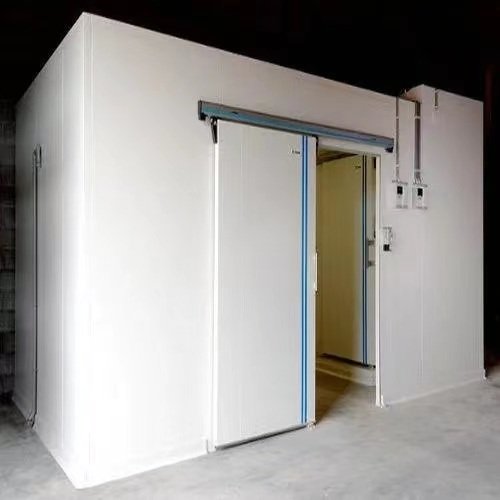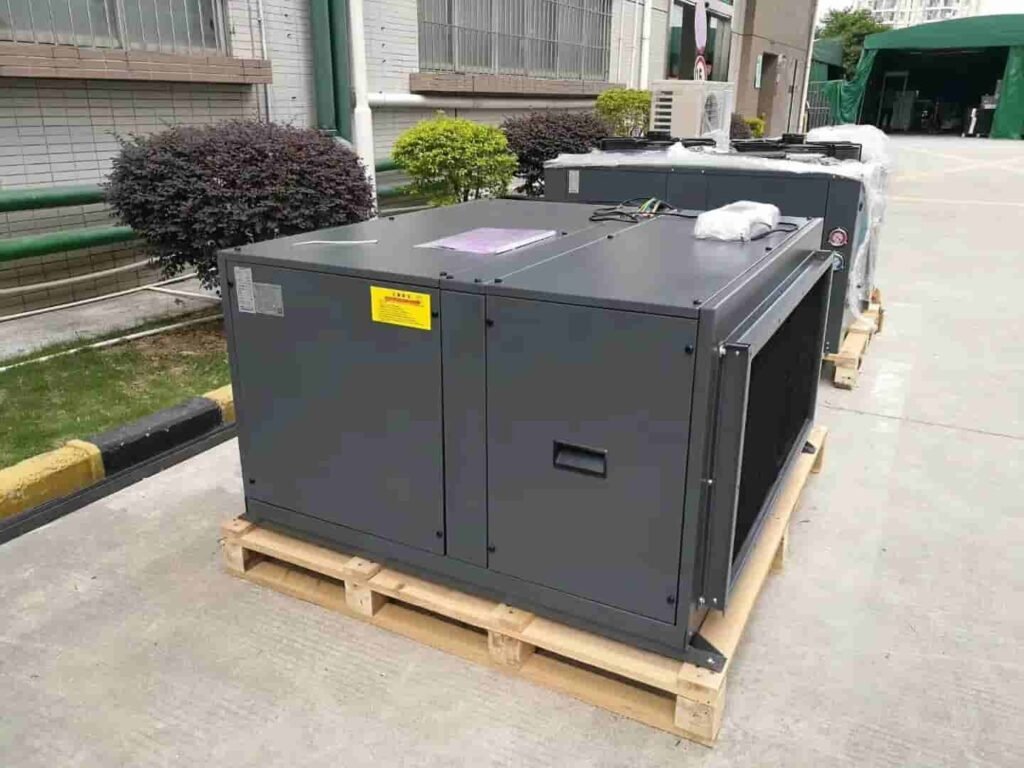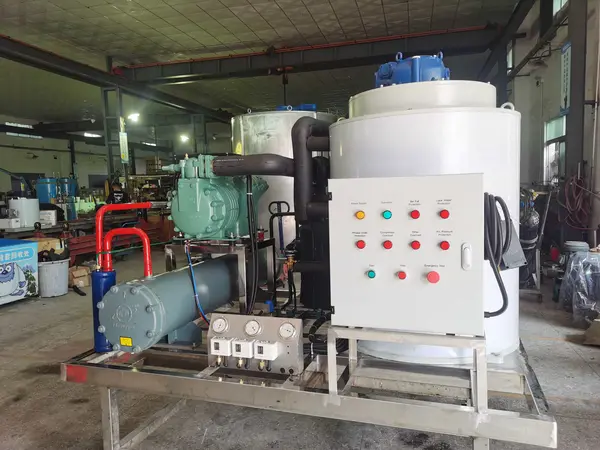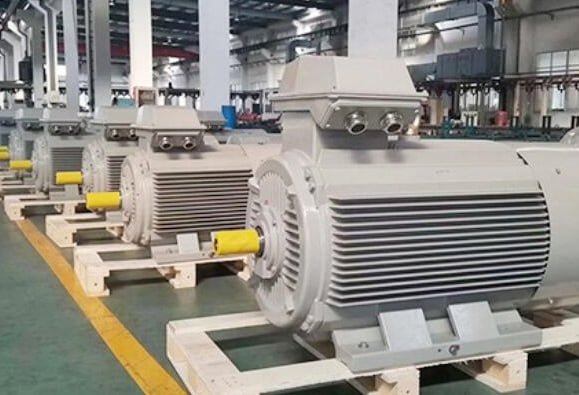فيما يلي درجات الحرارة الشائعة الاستخدام لـ وحدات التبريد. أنت بحاجة إلى فهمها والانتباه إلى اختلافاتها أثناء الصيانة اليومية.
درجة حرارة التفريغ
درجة حرارة التفريغ (المعروف أيضا باسم درجة حرارة العادم) تشير وحدة التبريد إلى درجة حرارة مادة التبريد عند خروجها من الضاغط. هذه معلمة حاسمة في أنظمة التبريد, لأنه يعكس الحالة الحرارية لغاز التبريد بعد الضغط. درجة حرارة التفريغ عادة ما تكون في حدود 50درجة مئوية ~ 120 درجة مئوية (122درجة فهرنهايت ~ 248 درجة فهرنهايت).
يمكن أن تشير درجات حرارة التفريغ المرتفعة إلى مشكلات محتملة مثل:
1. ارتفاع درجة الحرارة: قد يؤدي إلى تلف الضاغط أو يؤدي إلى ذلك مواد التشحيم تدهور.
2. مستوى سائل التبريد غير صحيح: يمكن أن يؤثر وجود كمية كبيرة جدًا أو قليلة جدًا من مادة التبريد على كفاءة النظام.
3. سوء التبادل الحراري: تبديد الحرارة غير فعال في مكثف يمكن أن تزيد من درجة حرارة التفريغ.
4. ارتفاع درجة حرارة الشفط: قد تؤدي الحرارة المفرطة عند مدخل الضاغط إلى ارتفاع درجات حرارة التفريغ.
درجة حرارة غلاف الضاغط
تشير درجة حرارة غلاف الضاغط إلى درجة حرارة السطح الخارجي لغلاف الضاغط أثناء التشغيل. وهو مؤشر للحرارة المتولدة داخل الضاغط نتيجة العمل الميكانيكي وضغط مادة التبريد.
العوامل الرئيسية تؤثر ضاغط درجة حرارة القشرة
1. تحميل الضاغط: يمكن أن تؤدي الأحمال العالية إلى زيادة الاحتكاك الداخلي والحرارة.
2. درجة الحرارة المحيطة: يمكن أن تؤثر البيئة المحيطة على كفاءة تبريد الضاغط.
3. ميزة المبردات: يؤثر نوع وحالة مادة التبريد على الخصائص الحرارية للنظام.
4. كفاءة النظام: مشاكل مثل سوء التشحيم, المرشحات المسدودة, أو يمكن أن يؤدي التبريد غير الكافي إلى رفع درجة حرارة القشرة.
النطاقات العادية: تختلف درجة حرارة الغلاف حسب التصميم والنظام ولكنها أقل من درجة حرارة التفريغ. بالنسبة لمعظم الأنظمة, يمكن أن تتراوح درجة حرارة القشرة بين 40درجة مئوية ~ 90 درجة مئوية (104درجة فهرنهايت ~ 194 درجة فهرنهايت). من المهم البقاء ضمن الشركات المصنعة’ الحدود الموصى بها لتجنب ارتفاع درجة الحرارة والضرر المحتمل للضاغط.
يمكن أن تساعد درجة حرارة غلاف المراقبة المنتظمة في اكتشاف العلامات المبكرة لعدم الكفاءة أو الفشل في نظام التبريد.
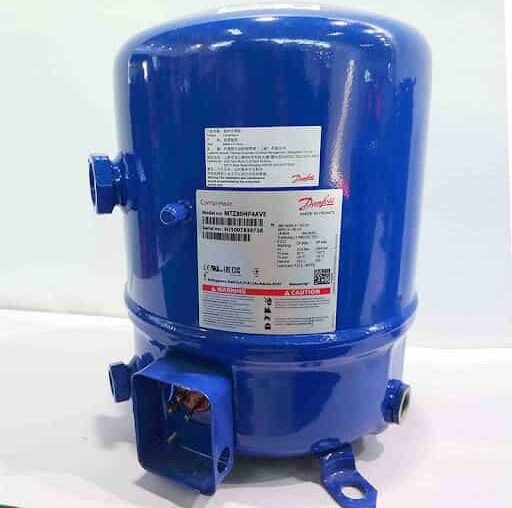
درجة حرارة التكثيف
تشير درجة حرارة التكثيف إلى درجة الحرارة التي المبردات يتغير من الحالة البخارية إلى الحالة السائلة في المكثف أثناء دورة التبريد. يحدث هذا تحت ضغط معين, المعروف باسم ضغط التكثيف, والذي يتم تحديده من خلال تصميم النظام وظروف التشغيل.
نطاق درجة حرارة التكثيف
مكثف تبريد الهواء
احتياجات درجة حرارة التكثيف 10درجة مئوية ~ 15 درجة مئوية (18درجة فهرنهايت ~ 27 درجة فهرنهايت) أعلى من درجة الحرارة المحيطة.
على سبيل المثال, إذا كانت درجة الحرارة المحيطة 30 درجة مئوية (86درجة فهرنهايت), تتراوح درجة حرارة التكثيف من 40درجة مئوية ~ 45 درجة مئوية (104درجة فهرنهايت ~ 113 درجة فهرنهايت).
مكثف مبرد بالماء
احتياجات درجة حرارة التكثيف 3درجة مئوية ~ 8 درجة مئوية (5درجة فهرنهايت ~ 15 درجة فهرنهايت) أعلى من درجة حرارة الماء الداخل.
على سبيل المثال, إذا كانت درجة حرارة مدخل ماء التبريد 25 درجة مئوية (77درجة فهرنهايت), تتراوح درجة حرارة التكثيف من 28درجة مئوية ~ 33 درجة مئوية (82درجة فهرنهايت ~ 91 درجة فهرنهايت).
النقاط الرئيسية حول درجة حرارة التكثيف
1. العلاقة برفض الحرارة: تعكس درجة حرارة التكثيف النقطة التي يطلق عندها غاز التبريد الحرارة إلى البيئة المحيطة (الهواء أو الماء) في المكثف.
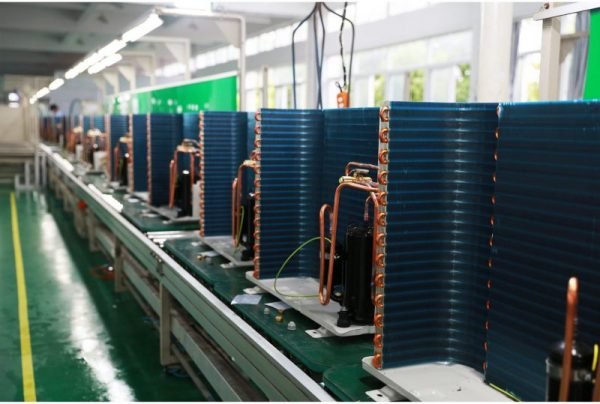
2. كفاءة النظام: تعتبر درجة حرارة التكثيف المثالية أمرًا بالغ الأهمية للحفاظ على كفاءة النظام. يمكن أن تشير درجات حرارة التكثيف المرتفعة إلى ضعف نقل الحرارة أو عدم كفاية أداء المكثف.
درجة حرارة قذيفة المكثف
تشير درجة حرارة غلاف المكثف إلى درجة حرارة سطح غلاف المكثف أو الغلاف الخارجي أثناء التشغيل. تشير درجة الحرارة هذه إلى مدى فعالية المكثف في تبديد الحرارة الممتصة من مادة التبريد إلى البيئة المحيطة.
عادة ما تكون أعلى قليلاً من درجة حرارة الهواء المحيط, تقريبا. 2درجة مئوية ~ 15 درجة مئوية (4درجة فهرنهايت ~ 27 درجة فهرنهايت) أعلى.
النقاط الرئيسية حول درجة حرارة غلاف المكثف
1. مؤشر رفض الحرارة: تعكس درجة حرارة القشرة انتقال الحرارة الذي يحدث داخل المكثف. يجب أن تكون أقل من درجة حرارة تكثيف المبرد.
2. العوامل المؤثرة:
الظروف المحيطة–ارتفاع درجات حرارة الهواء أو الماء المحيط يمكن أن يؤدي إلى رفع درجة حرارة القشرة في الأنظمة المبردة بالهواء أو المبردة بالماء.
كفاءة المكثف–الأوساخ, قاذورات, أو يمكن أن يؤدي تدفق الهواء الضعيف إلى نقل الحرارة بشكل غير فعال وارتفاع درجات حرارة القشرة.
ضغط المبرد والتحميل–قد يؤدي الحمل المفرط للنظام أو ضغط سائل التبريد إلى زيادة الحرارة الداخلية, تؤثر على درجة حرارة القشرة.
درجة حرارة المتلقي
تشير درجة حرارة جهاز الاستقبال إلى درجة حرارة مادة التبريد المخزنة في استقبال السائل من نظام التبريد. جهاز استقبال السائل هو وعاء يقع بعد المكثف, يمكنه تخزين وتنظيم إمداد سائل التبريد إلى صمام التمدد أو المكونات النهائية الأخرى.
النقاط الرئيسية حول درجة حرارة جهاز الاستقبال
1. العلاقة لدرجة حرارة التكثيف
درجة حرارة جهاز الاستقبال قريبة من درجة حرارة التكثيف نظرًا لأن مادة التبريد الموجودة في جهاز الاستقبال تكون في حالة سائلة مشبعة أو مبردة جزئيًا.
قد تكون أقل قليلاً من درجة حرارة التكثيف إذا حدث التبريد الفرعي قبل دخول المبرد إلى جهاز الاستقبال.
2. مؤشر تشغيل النظام
تشير درجات حرارة جهاز الاستقبال العادية إلى التشغيل السليم للنظام, مع إزالة الحرارة الكافية في المكثف.
يمكن أن تشير درجات الحرارة المرتفعة إلى مشكلات مثل عدم كفاية تبريد المكثف أو الظروف المحيطة العالية.
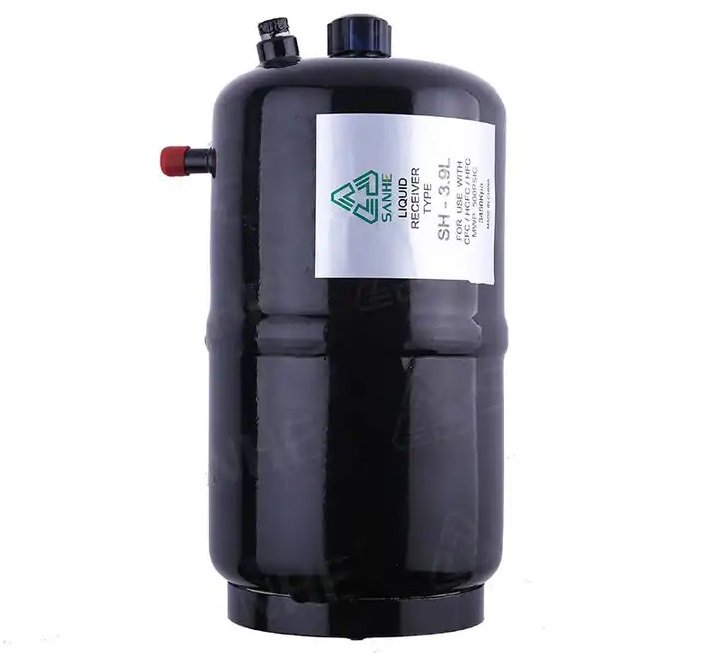
3. نطاق درجة حرارة
لأنظمة تبريد الهواء, درجة حرارة المتلقي هي 5درجة مئوية ~ 10 درجة مئوية (9درجة فهرنهايت ~ 18 درجة فهرنهايت) تحت درجة حرارة التكثيف.
لأنظمة تبريد المياه, قد يكون الفرق أصغر بسبب كفاءة التبريد الأفضل.
درجة حرارة الفلتر
تشير درجة حرارة الفلتر إلى درجة حرارة مادة التبريد أثناء مرورها عبر الفلتر أو مرشح أكثر جفافا في نظام التبريد. مُجفف الفلتر هو أحد المكونات المستخدمة لإزالة الرطوبة, التراب, والملوثات الأخرى من المبرد لحماية النظام وضمان التشغيل الفعال.
النقاط الرئيسية حول درجة حرارة الفلتر
1. حالة المبرد
يكون سائل التبريد الذي يمر عبر الفلتر في حالة سائلة أو مبردة من الباطن على الجانب عالي الضغط من النظام.
في بعض الأنظمة, يمكنه أيضًا التعامل مع مبرد البخار على جانب الضغط المنخفض.
2. نطاق درجة الحرارة العادية
يجب أن تكون درجة حرارة المرشح قريبة من درجة حرارة السائل المبرد.
إنه 5درجة مئوية ~ 10 درجة مئوية (9درجة فهرنهايت ~ 18 درجة فهرنهايت) أقل من درجة حرارة التكثيف.
3. مؤشرات على درجة حرارة غير طبيعية
قد يشير انخفاض درجة الحرارة عبر الفلتر إلى انسداد جزئي بسبب الأوساخ, جليد, أو الحطام.
قد يشير ارتفاع درجة الحرارة إلى وجود مشكلات في تدفق غاز التبريد أو ارتفاع درجة حرارة أحد المكونات بسبب عدم كفاءة النظام.
درجة حرارة الشفط
درجة حرارة الشفط (أو درجة حرارة المدخل) يشير إلى درجة حرارة مادة التبريد عند دخولها إلى الضاغط من خلال خط الشفط في نظام التبريد. تعتبر درجة الحرارة هذه معلمة مهمة لأداء النظام وصحة الضاغط.
النقاط الرئيسية حول درجة حرارة الشفط
1. العلاقة بحالة التبريد
يكون سائل التبريد في حالة بخار شديد السخونة لضمان عدم دخول سائل التبريد إلى الضاغط, مما قد يسبب الضرر.
2. نطاق درجة الحرارة العادية
درجة حرارة الشفط أعلى قليلاً من درجة حرارة المبخر بسبب إضافة الحرارة الزائدة.
تتراوح قيم الحرارة الزائدة النموذجية من 5درجة مئوية إلى 15 درجة مئوية (9درجة فهرنهايت إلى 27 درجة فهرنهايت).
3. أهمية المراقبة
درجة حرارة الشفط منخفضة: يشير إلى عدم كفاية الحرارة الزائدة, خطر دخول سائل التبريد إلى الضاغط ( المعروف باسم “تباطؤ السائل”).
ارتفاع درجة حرارة الشفط: يقترح ارتفاع درجة الحرارة المفرطة, والتي يمكن أن تقلل من كفاءة النظام وتزيد من سخونة الضاغط.
درجة حرارة تكساس
درجة الحرارة المرتبطة بصمام التمدد الحراري (TXV) يشير إلى درجة حرارة مادة التبريد أو المنطقة المحيطة التي يتحكم فيها الصمام ويستشعرها. ينظم TXV تدفق مادة التبريد إلى المبخر بناءً على ارتفاع درجة حرارة مادة التبريد الخارجة من المبخر.
درجات الحرارة الرئيسية في تشغيل TXV
1. درجة حرارة الاستشعار
المستشعر, متصلة بخط الشفط عند مخرج المبخر, يقيس درجة حرارة المبرد.
تحدد درجة الحرارة هذه درجة الحرارة الزائدة وتتحكم في فتح أو إغلاق TXV لتنظيم تدفق غاز التبريد.
عادة 5درجة مئوية ~ 15 درجة مئوية (9درجة فهرنهايت ~ 27 درجة فهرنهايت) أعلى من درجة حرارة تشبع المبخر.
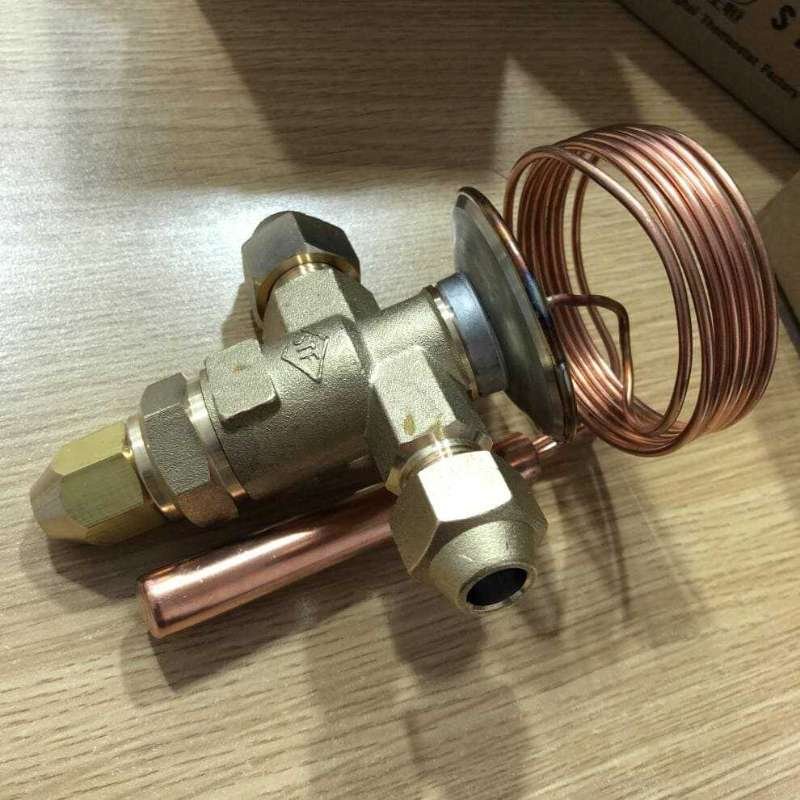
2. درجة حرارة سائل التبريد عند مدخل TXV
درجة حرارة مادة التبريد التي تدخل إلى TXV هي درجة حرارة السائل المبرد, والتي ينبغي أن تكون أقل قليلا من درجة حرارة التكثيف.
عمومًا 5درجة مئوية ~ 10 درجة مئوية (9درجة فهرنهايت ~ 18 درجة فهرنهايت) تحت درجة حرارة التكثيف.
3. درجة حرارة سائل التبريد عند مخرج TXV
بعد المرور عبر TXV, تنخفض درجة حرارة سائل التبريد بشكل ملحوظ بسبب التمدد, الوصول إلى درجة حرارة التشبع للمبخر.
عمومًا 5درجة مئوية ~ 10 درجة مئوية (9درجة فهرنهايت ~ 18 درجة فهرنهايت) تحت درجة حرارة التكثيف.
درجة حرارة التبخر
درجة حرارة التبخر (المعروف أيضا باسم درجة حرارة التبخر أو المشبعة) يشير إلى درجة الحرارة التي يتغير عندها سائل التبريد من سائل إلى بخار داخل المبخر في نظام التبريد.
النقاط الرئيسية حول درجة حرارة التبخر
1. العلاقة بحالة التبريد
عند درجة حرارة التبخر, يمتص المبرد الحرارة من البيئة ويتحول من السائل إلى البخار.
2. يحددها ضغط المبخر
تتوافق درجة حرارة التبخر مع درجة حرارة التشبع عند الضغط المحدد داخل المبخر. وتعتمد هذه العلاقة على نوع مادة التبريد المستخدمة.
نطاق درجة حرارة
درجة حرارة التبخر عادة 5درجة مئوية ~ 10 درجة مئوية (9درجة فهرنهايت ~ 18 درجة فهرنهايت) أقل من درجة الحرارة المستهدفة للوسط الذي يتم تبريده (على سبيل المثال, الهواء أو الماء).
ل تكييف الهواء نظام, النطاق 2درجة مئوية ~ 10 درجة مئوية (36درجة فهرنهايت ~ 50 درجة فهرنهايت).
لدرجات الحرارة المنخفضة أنظمة التبريد, يمكن أن تكون منخفضة مثل -40درجة مئوية ~ -10 درجة مئوية (-40درجة فهرنهايت ~ 14 درجة فهرنهايت).
درجة الحرارة المحيطة في الهواء الطلق
تشير درجة الحرارة المحيطة الخارجية إلى درجة الحرارة خارج المبنى أو نظام التبريد. إنها درجة الحرارة الخارجية للبيئة التي يعمل فيها النظام, ويلعب دورًا مهمًا في أداء المعدات مثل المكثفات المبردة بالهواء أو الوحدات الخارجية لأنظمة التدفئة والتهوية وتكييف الهواء و أنظمة التبريد.
النقاط الرئيسية حول درجة الحرارة المحيطة في الهواء الطلق
1. التأثير على أداء المكثف
في أنظمة تبريد الهواء, تؤثر درجة الحرارة المحيطة الخارجية بشكل مباشر على كفاءة المكثف. يمكن أن تؤدي درجة الحرارة المحيطة المرتفعة إلى تقليل قدرة المكثف على رفض الحرارة, يؤدي إلى ارتفاع ضغوط التفريغ ودرجات الحرارة.
2. تحميل النظام
تؤثر درجة الحرارة الخارجية على حمل التبريد الإجمالي للنظام. على سبيل المثال, في الطقس الحار, متطلبات التبريد أعلى, والتي يمكن أن تؤثر على أداء تبريد وأنظمة تكييف الهواء.
3. التغير الموسمي
تتقلب درجة الحرارة المحيطة مع الفصول, دافئ في الصيف وبارد في الشتاء. يجب أن تتعامل الأنظمة مع هذه الاختلافات بفعالية.
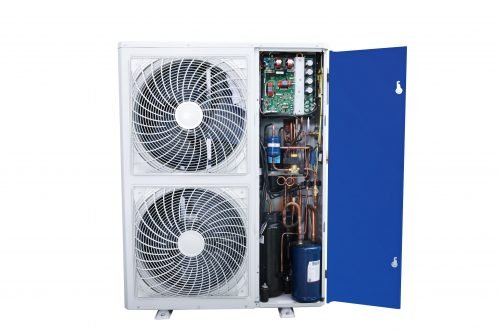
4. نطاق درجة الحرارة العادية
يمكن أن يختلف نطاق درجة الحرارة الخارجية بشكل كبير حسب الموقع الجغرافي والمواسم, ولكن عادة, يمكن أن تتراوح من -10درجة مئوية (14درجة فهرنهايت) في الشتاء ل +40درجة مئوية (104درجة فهرنهايت) أو أعلى خلال فصل الصيف في العديد من المناطق.
5. الأهمية في تحديد حجم النظام وتشغيله
يأخذ المهندسون في الاعتبار درجة الحرارة المحيطة الخارجية عند تصميم أنظمة التدفئة والتهوية وتكييف الهواء والتبريد لضمان قدرتها على العمل بكفاءة في ظل ظروف درجات الحرارة العالية والمنخفضة..
خاتمة
وتتأثر درجات الحرارة هذه بعوامل مثل الظروف المحيطة, تصميم النظام, نوع المبرد,إلخ.
يعد الاختيار الصحيح وصيانة درجات الحرارة أمرًا بالغ الأهمية لتحسين كفاءة استخدام الطاقة, ضمان طول عمر النظام, وتلبية متطلبات التبريد أو التجميد المحددة.
أي تعليقات?
نرحب ترك رسالة أو إعادة نشر.



